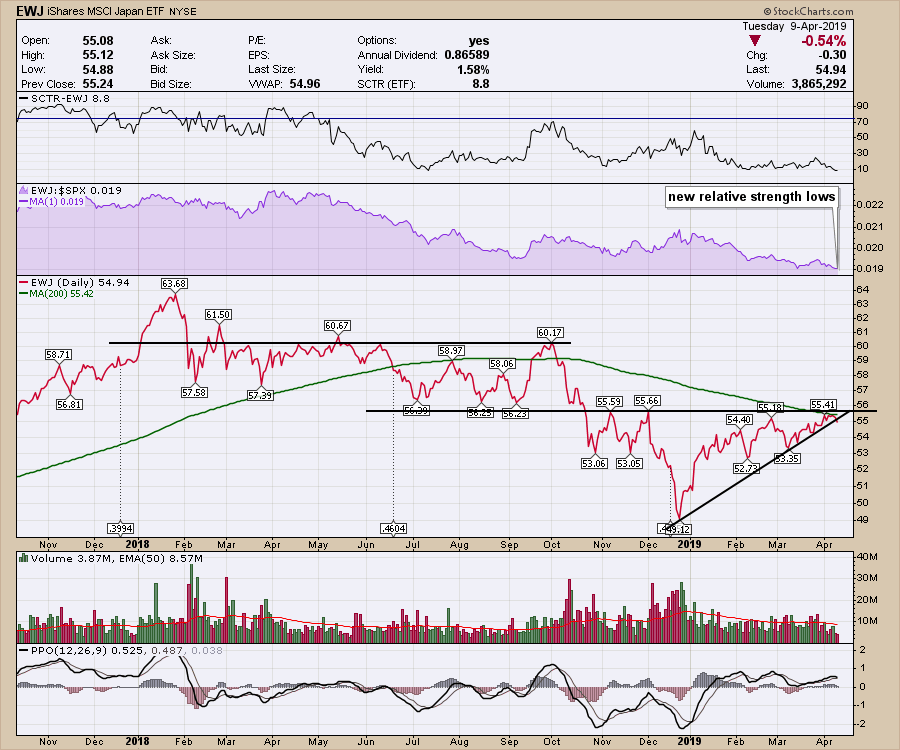Japan is a market that I like to keep an eye on, as it's a big participant in the global economy. This week, the Japan ETF is in focus as it tries to get through the 200-day moving average, as well as make a topside breakout through a key resistance level. During major downturns like 2015, 2011, 2008 and 2000, the 200-DMA is a good moving average to keep tabs on after it goes below. With the bond market starting to fire off some significant clues, it also suggests a need for increased caution if these levels cannot be broken. Today, Japan started to break the 3-month uptrend off of the December lows. In overnight trading, the Nikkei is down a little more.
In analyzing the global market charts, I find Japan to be a key participant in macro uptrends.
 Here is a 5-year view. (Watching the 40-week moving average is similar to a 200-day moving average.)
Here is a 5-year view. (Watching the 40-week moving average is similar to a 200-day moving average.)
 To see the bigger picture going back to the late 1990s, I'll use the $NIKK, as we did not have ETFs with as much history back then. Notice how, in 2007, the $NIKK stalled under the 40-week moving average as the US markets hit their final high on October 9, 2007. The Nikkei can give us some noticeable signals, such as stalling at the 40-week moving average as the US market tops. So don't ignore the signals coming from the $NIKK or the EWJ. The foreign markets can offer helpful clues. Breakouts are helpful, stalling here is not!
To see the bigger picture going back to the late 1990s, I'll use the $NIKK, as we did not have ETFs with as much history back then. Notice how, in 2007, the $NIKK stalled under the 40-week moving average as the US markets hit their final high on October 9, 2007. The Nikkei can give us some noticeable signals, such as stalling at the 40-week moving average as the US market tops. So don't ignore the signals coming from the $NIKK or the EWJ. The foreign markets can offer helpful clues. Breakouts are helpful, stalling here is not!
 All that is to say: don't ignore this chart!
All that is to say: don't ignore this chart!
Good trading,
Greg Schnell, CMT, MFTA
Senior Technical Analyst, StockCharts.com
Author, Stock Charts For Dummies
Want to stay on top of the market's latest intermarket signals?
– Follow @SchnellInvestor on Twitter
– Connect with Greg on LinkedIn
– Subscribe to The Canadian Technician






